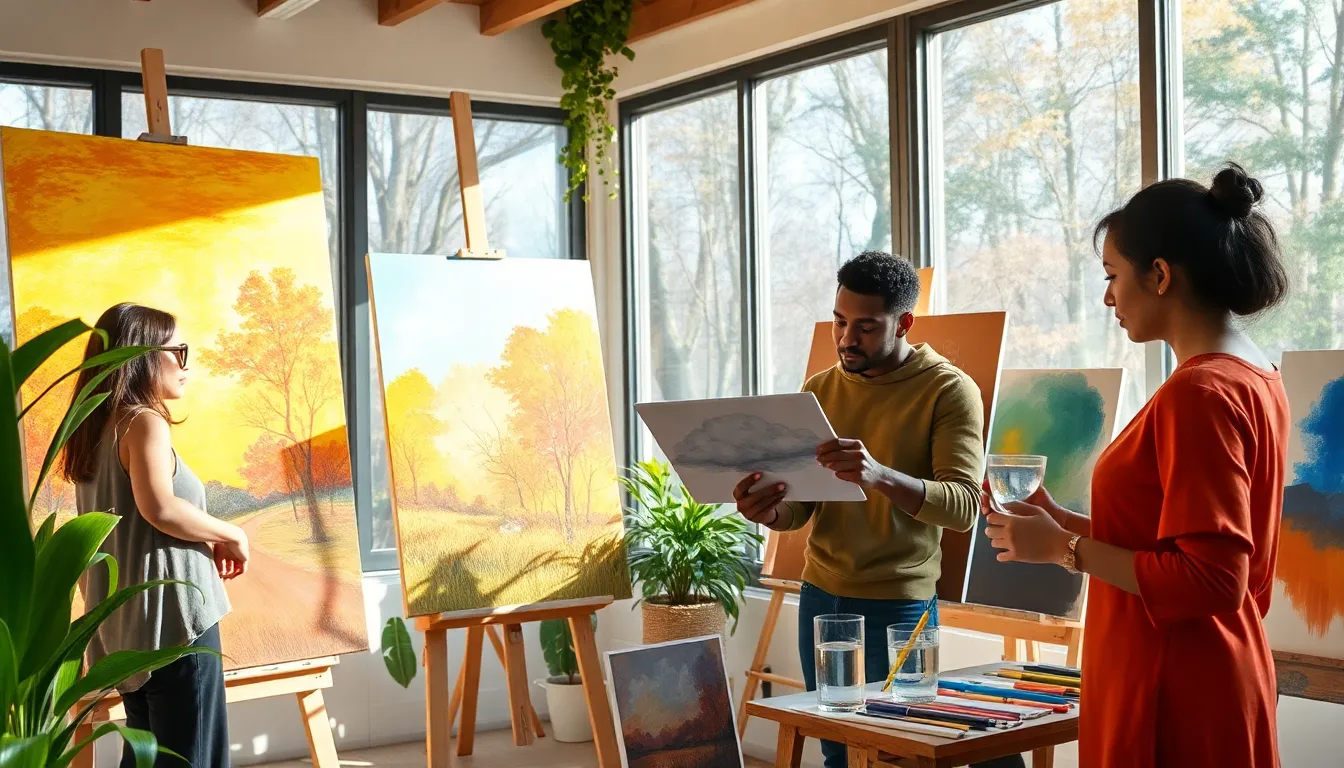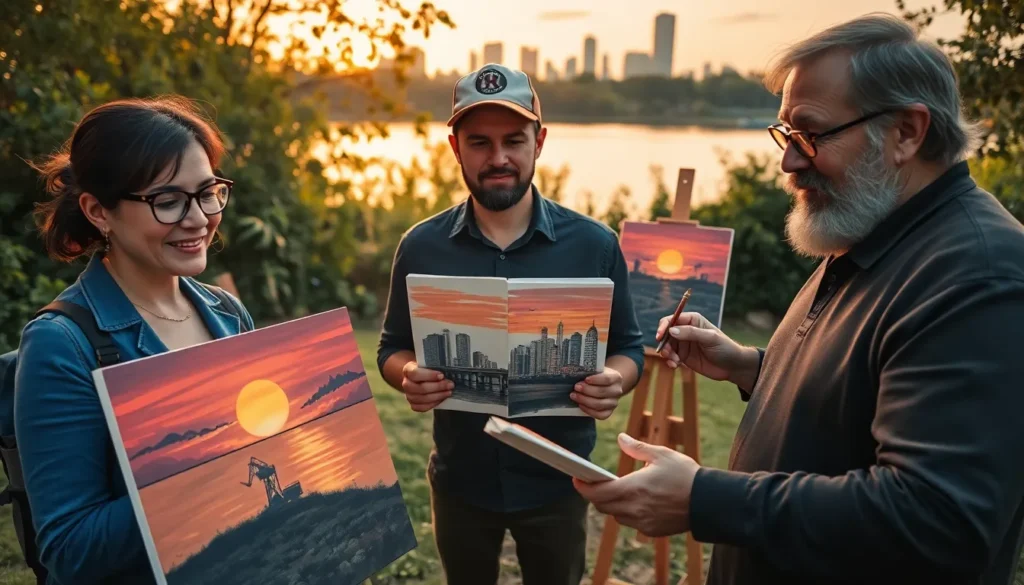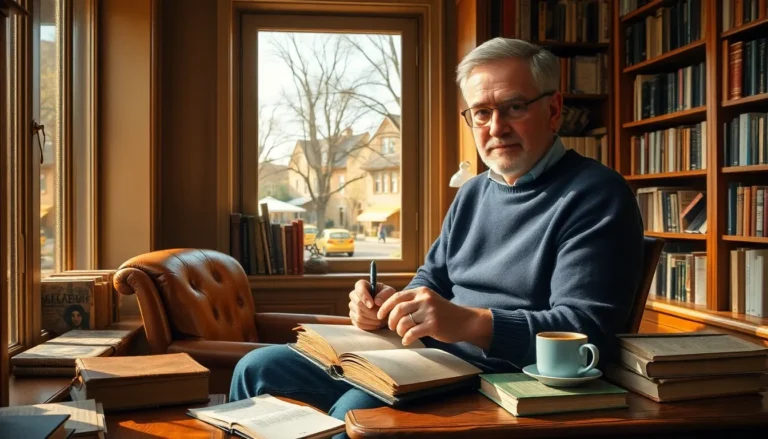Art is often said to imitate life, but what if life itself is the ultimate artistic muse? Whether you’re picking up a brush for the first time or you’re an old pro looking for a spark, inspiration is the secret sauce that makes your paintings sing. Let’s dig into some creative wells of inspiration that will not just get the paint flowing but may even rattle your creativity out of its cozy little shell. Who knows, you might just find a masterpiece hiding in the mundane.
Table of Contents
ToggleExploring Nature as a Muse

Nature is a boundless source of painting inspiration ideas. From the intricate patterns on a butterfly’s wings to the grand vistas of mountains bathed in golden sunset, the natural world can ignite artistic passions in profound ways. Artists often venture into landscapes, capturing the raw beauty of forests, lakes, and fields.
Consider the changing seasons: how spring’s blossoms differ from winter’s starkness. Each season offers a unique palette. Imagine creating a painting that celebrates the vibrancy of autumn’s foliage or the tranquility of a snowy landscape.
Also, incorporating elements of nature doesn’t have to mean aiming for realism. Abstract interpretations of a sunset’s colors or the dynamic shapes of clouds can also serve as powerful inspirations.
Urban Landscapes and City Life
Cities breathe life, chaos, and stories into every canvas they touch. The hustle and bustle of urban life can serve as a potent source of inspiration. Skyscrapers reaching for the heavens, busy streets, and quiet corners in bustling cafés all tell a tale waiting to be painted.
Consider the interplay of light and shadow in a cityscape. During golden hour, the sun casts interesting shapes against buildings, creating dramatic contrasts. Artists can explore how the colors of urban sunsets differ from rural ones.
Street art, architecture, and people moving through their day all contribute to a city’s unique atmosphere. Painting city life can also evoke emotional responses, connecting the viewer to shared experiences and memories.
Emotional Expression Through Color
Colors evoke emotions, and understanding their psychological effects can be a powerful tool for artists. For instance, warm colors like reds and oranges can ignite passion and energy, while cool colors like blues and greens evoke calmness and serenity.
Artists can explore how to mix colors to express their current mood or to tell a story. Think about representing joy through bright yellows or depicting sorrow with muted blues. By experimenting with color palettes, they can create pieces that resonate on deeper emotional levels.
Also, remember that color theory offers fundamental principles that can enhance the effectiveness of a painting. Understanding complementary colors can help create vibrant contrasts, making your artwork pop.
Historical and Cultural Influences
Throughout art history, movements like Impressionism, Surrealism, or Cubism have shaped how artists view the world. Understanding these movements can offer deeply rooted inspiration for contemporary artists.
Also, studying cultural influences can enrich the creative process. For instance, Eastern philosophies often emphasize harmony and nature, while Western art has a history of exploring human emotion and experience.
Immerse oneself in art history books, documentaries, and exhibitions. Artists can find sparks of inspiration by analyzing iconic works and the contexts in which they were created. What themes resonate with them? How can they reinterpret those themes in their work?
Using Literature and Music for Inspiration
Books and music are treasure troves of inspiration. Quotes from literature can ignite a painting’s narrative, while song lyrics may evoke specific images or emotions. Artists often visualize their thoughts, feelings, or scenes through these mediums.
For example, take a beautifully written poem and let its words guide the colors and strokes on the canvas. Similarly, listening to music while painting can enhance the emotional atmosphere, influencing the brushwork and mood. A lively symphony might inspire a dynamic composition, while a soft ballad could lead to gentle, flowing lines.
By intertwining these artistic forms, painters can deliver multidimensional experiences in their art.
Photography and Visual References
In today’s visual-centric world, photography serves as a practical source of inspiration. Photographs encapsulate moments in time, allowing artists to reference specific details about light, shadow, and composition.
By visiting photography websites or platforms like Instagram, artists can discover various styles and subjects. They can use reference photos to build sketches or develop detailed paintings.
Alternatively, they might choose to mimic a photographer’s style while incorporating their unique spin on it. This method encourages artistic growth and experimentation, leading to unique results.
Creative Exercises to Spark Inspiration
Sometimes the best way to find inspiration is through structured creativity. Engaging in specific exercises can help unlock artistic potential. For instance, a daily sketchbook practice maintains a habit of drawing and observing the world around.
Another exercise involves timed painting sessions. Set a timer for ten minutes and create a piece without overthinking. This can free artists from the constraints of perfectionism and allow their instincts to take over.
Collaborative projects are fantastic too. Bloggers, video creators, or local artists can form groups to share ideas, critique, and inspire one another through joint canvases or art challenges. The dynamism of group work often leads to unexpected breakthroughs.



